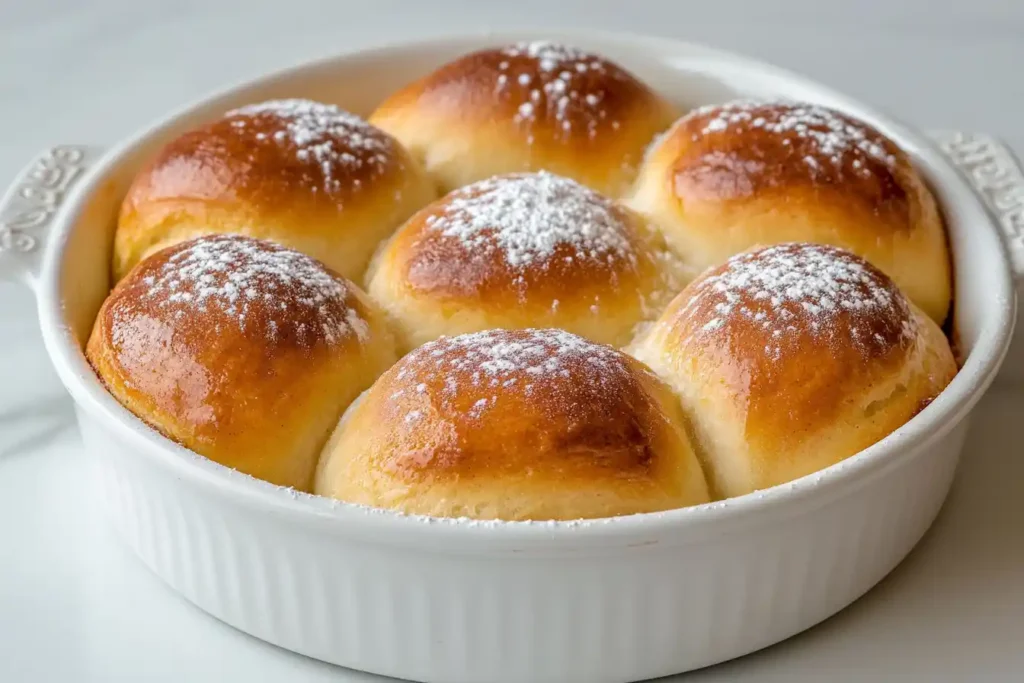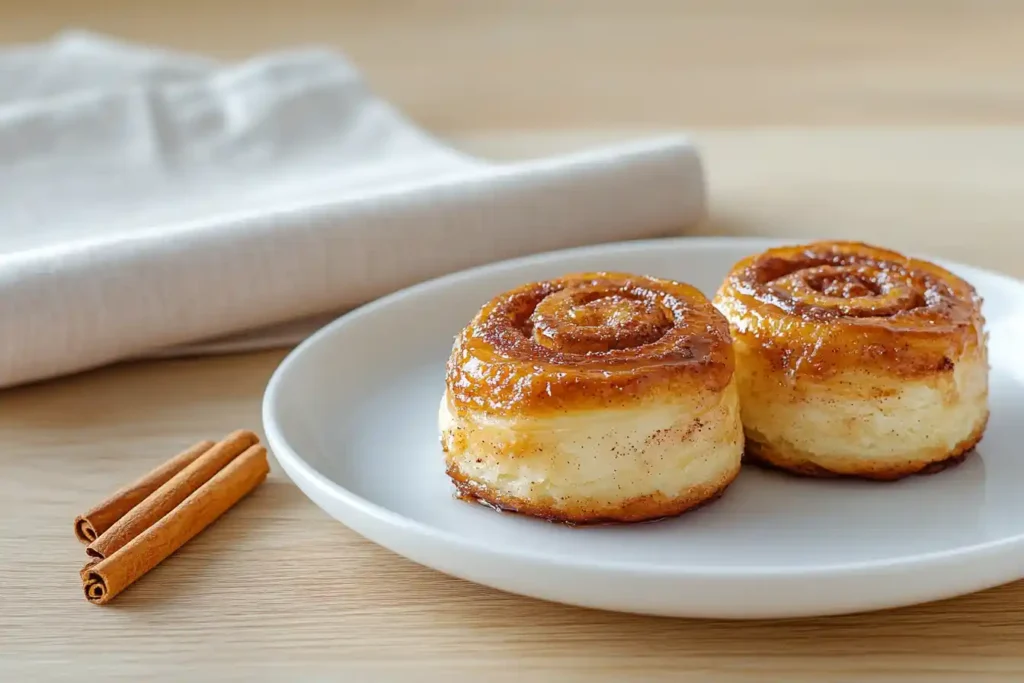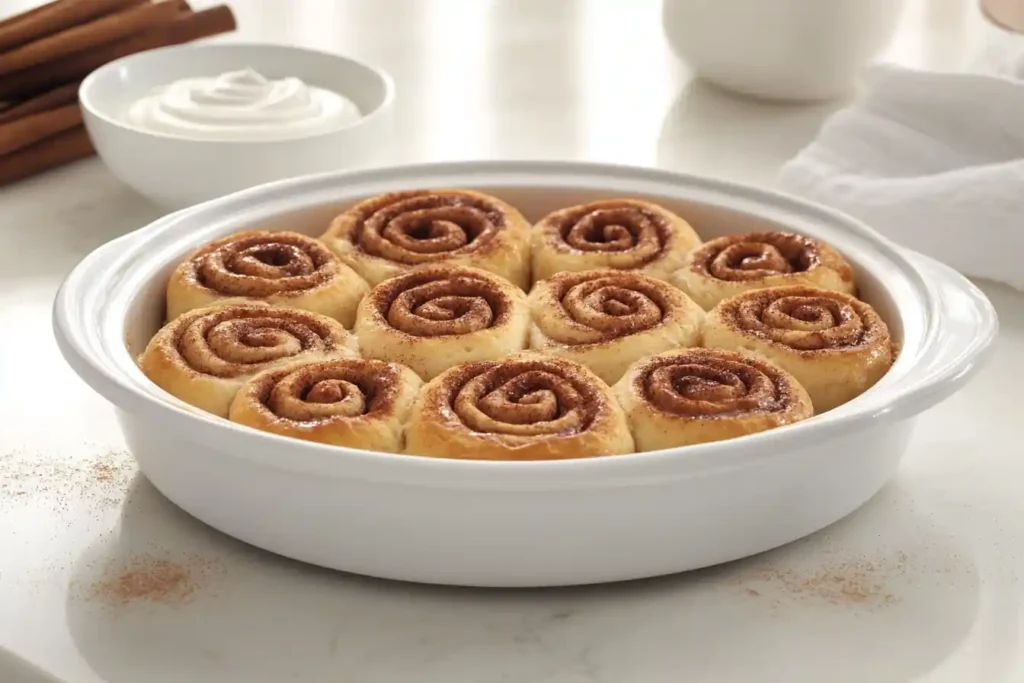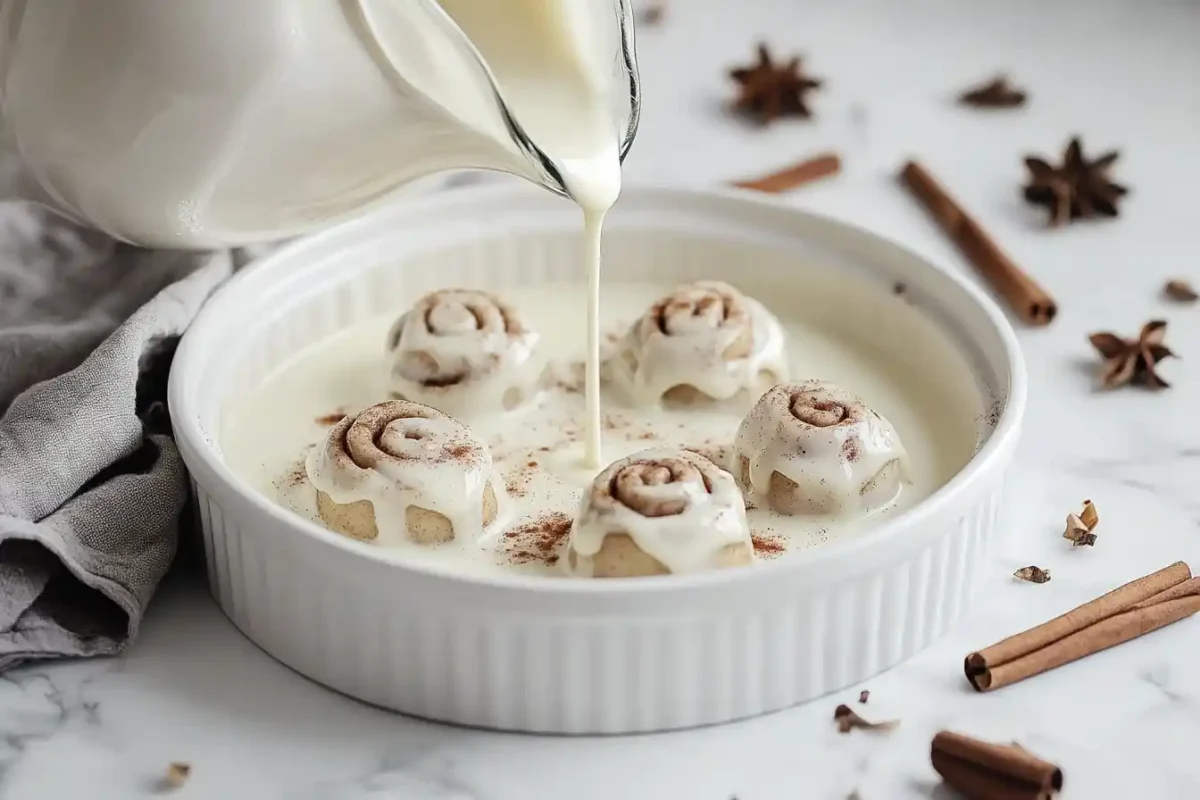Understanding the Role of Heavy Cream in Baking
When it comes to enhancing baked goods, heavy cream is the unsung hero. This rich ingredient plays a vital role in elevating everything from cookies to pastries—and yes, cinnamon rolls. To grasp why it’s such a game-changer, it’s essential to break down its multifaceted contribution to baking.
Heavy Cream: A Baker’s Best Friend
Heavy cream is more than just a dairy product; it’s a multitasker in the kitchen. With its luxurious texture and high-fat content, it provides an unmatched creaminess that makes baked goods irresistible. When poured over unbaked cinnamon rolls, this ingredient does double duty by adding moisture and enhancing flavor.
The Perfect Combination of Fat and Liquid
Fat, as found in heavy cream, is crucial for tenderizing dough. It works by coating the flour proteins, reducing gluten formation, and making the texture softer and lighter. Meanwhile, the liquid element hydrates the dough, ensuring it rises beautifully while remaining moist.
Heavy Cream in Caramelization
Ever noticed how the bottom of a cinnamon roll baked with heavy cream turns gooey and golden-brown? That’s the magic of caramelization at work.The natural sugars in heavy cream combine with the cinnamon-sugar filling, creating a sticky, rich layer that elevates every bite, similar to the difference between Chelsea buns and cinnamon rolls.
A Subtle Sweetness
Unlike granulated sugar, which delivers a sharp sweetness, heavy cream imparts a mild, creamy sweetness. This balances the strong, spicy kick of cinnamon, letting each flavor shine without overpowering the others.
Moisture Retention: The Key to Perfect Rolls
Perhaps the most critical role heavy cream plays in cinnamon rolls is moisture retention. As the rolls bake, the cream permeates through the layers, keeping them soft and fluffy for longer. This means you can enjoy leftovers that taste just as good as freshly baked ones.

The Science Behind Adding Heavy Cream to Cinnamon Rolls
Baking might feel like magic, but it’s really science at work. When you pour heavy cream over cinnamon rolls before baking, several scientific processes come into play, transforming the dough into a soft, flavorful, and utterly indulgent treat. Let’s break it down.
Hydration and Steam: A Dynamic Duo
The liquid content in heavy cream hydrates the dough as it bakes. During baking, the cream heats up and releases steam, which infiltrates the layers of dough. This added steam softens the rolls from within, creating a tender texture that’s hard to achieve with dry heat alone.
Fat’s Role in Softening and Enriching
The high-fat content of heavy cream is key to its magic. Fat weakens the gluten network in the dough, which would otherwise make the rolls chewy or tough. By doing so, it ensures the cinnamon rolls are melt-in-your-mouth soft. Additionally, fat carries flavor molecules, meaning every bite is richer and more aromatic.
Enhanced Maillard Reaction
When the rolls are exposed to the oven’s heat, a chemical reaction called the Maillard reaction occurs. This reaction is responsible for the golden-brown crust and the tantalizing aroma of baked goods. Heavy cream supercharges this process by providing proteins and sugars that interact to form complex, savory-sweet flavors and a visually appealing finish.
Why the Cream-to-Dough Ratio Matters
Getting the right ratio of cream to dough is essential. Too much cream can oversaturate the dough, leading to soggy rolls, while too little won’t achieve the desired softness or flavor boost. The optimal amount ensures that the rolls are moist but still hold their shape.
Creating a Caramelized Bottom Layer
One of the hidden delights of using heavy cream is the caramelized layer it forms at the bottom of the dish. As the cream mixes with the sugar and butter in the filling, it thickens and creates a sticky, gooey layer reminiscent of a soft caramel. This feature alone makes the technique worth trying.
Benefits of Using Heavy Cream on Cinnamon Rolls
Nutritional Content of Cinnamon Rolls with Heavy Cream (Per 100g)
| Nutrient | Amount |
|---|---|
| Calories | 350 kcal |
| Protein | 5 g |
| Fat | 16 g |
| Saturated Fat | 10 g |
| Carbohydrates | 45 g |
| Sugars | 22 g |
| Fiber | 2 g |
| Sodium | 220 mg |
| Calcium | 50 mg |
Adding heavy cream to cinnamon rolls before baking isn’t just a fancy technique; it’s a game-changer. This small step brings a host of benefits that transform ordinary rolls into bakery-quality delights. Here’s why you should embrace this method.
Enhanced Moisture and Softness
One of the most notable benefits of heavy cream is the unparalleled moisture it adds. The cream seeps into the layers of dough, ensuring the rolls remain soft and tender. This prevents dryness, a common problem in cinnamon rolls, especially when they cool.
Richer Flavor Profile
Fat is a natural flavor enhancer, and the high-fat content of heavy cream amplifies the sweetness of the sugar and the warm, spicy notes of cinnamon. The result? A richer, more balanced flavor that lingers with every bite.
Improved Texture and Fluffiness
Using heavy cream helps achieve the ideal texture—light, airy, and slightly springy. By weakening the gluten structure, the cream creates rolls that feel like clouds in your mouth, with just the right amount of chewiness.
Extended Freshness
Nobody likes dry, stale cinnamon rolls the next day. The moisture from the heavy cream keeps the rolls fresh longer, meaning they taste just as good the morning after. Whether reheated or eaten cold, the texture remains invitingly soft.
A Caramelized Base for Extra Indulgence
Pouring heavy cream over the rolls before baking creates a caramelized layer at the bottom. This sticky-sweet base contrasts beautifully with the fluffy dough, adding an extra element of indulgence. It’s like getting two treats in one—pillowy rolls on top and a rich caramel glaze underneath.
Versatility in Flavor Additions
Because heavy cream is a neutral yet rich ingredient, it pairs wonderfully with other flavor additions. Whether you want to experiment with vanilla, orange zest, or nutmeg, the cream enhances these elements without overpowering them.
How to Incorporate Heavy Cream into Your Cinnamon Roll Recipe
Ready to try this transformative technique? Incorporating heavy cream into your cinnamon roll recipe is simpler than you might think. From prepping the rolls to adjusting the baking process, these steps ensure you’ll achieve the best results every time.
Pouring Heavy Cream Over Unbaked Rolls
The classic method involves pouring heavy cream directly over the prepared rolls just before baking. Here’s how to do it:
- Arrange the rolls snugly in a baking dish, leaving minimal gaps.
- Gently warm the cream until it’s lukewarm—this prevents shocking the dough with cold liquid.
- Pour the cream evenly over the rolls, making sure each one gets a generous coating.
- Allow the rolls to soak up the cream for a few minutes before placing them in the oven.
This step infuses the rolls with moisture, ensuring they bake into fluffy, tender treats.
Mixing Heavy Cream Into the Dough
For an even creamier texture, you can incorporate heavy cream directly into the dough. Substitute part of the liquid in your recipe with heavy cream. This technique enhances the richness of the dough itself, giving the finished rolls a buttery taste and extra softness.
Adding Heavy Cream to the Filling
For a twist, mix a splash of heavy cream into the cinnamon-sugar filling. This creates a paste-like consistency that spreads easily and melts into the dough during baking. The result? An ooey-gooey center that’s impossible to resist.
Adjusting Baking Time and Temperature
Because heavy cream introduces extra moisture, the baking process might need slight adjustments. Here’s what to keep in mind:
- Bake at a slightly lower temperature (around 325°F to 350°F) to prevent the cream from scorching.
- Add a few extra minutes to the baking time to ensure the rolls are cooked through and the cream has caramelized properly.
Tips for the Perfect Finish
- Brush the tops of the baked rolls with melted butter for a shiny, golden finish.
- Pair the rolls with cream cheese frosting or a drizzle of caramel sauce for added decadence.

Part 5: Alternative Ingredients to Heavy Cream
If you’re out of heavy cream or need a substitute for dietary reasons, don’t worry—you can still achieve moist and delicious cinnamon rolls. Several alternatives offer comparable results, each with its own unique characteristics. Let’s explore these options.
Half-and-Half: A Close Cousin
Half-and-half is an excellent alternative to heavy cream because it combines milk and cream, offering a lower-fat option. It delivers similar moisture and tenderness, though it may not create the same level of richness. For best results, warm the half-and-half before pouring it over the rolls.
Whole Milk: A Lighter Option
Whole milk is readily available and provides adequate moisture for cinnamon rolls. While it lacks the fat content of heavy cream, it still helps keep the rolls soft. To boost its richness, you can add a small pat of melted butter to the milk before using it.
Non-Dairy Substitutes for Plant-Based Bakers
For a vegan-friendly option, consider these non-dairy substitutes, which can also work well in recipes like this cinnamon roll muffins recipe.:
- Coconut Cream: Thick and creamy, this works well for a tropical twist. Its natural sweetness complements the cinnamon flavor beautifully.
- Oat Cream or Almond Cream: These plant-based creams mimic the texture of heavy cream without dairy, making them ideal for those with lactose intolerance.
Evaporated Milk: A Pantry Staple
If you have a can of evaporated milk on hand, you’re in luck! Its concentrated flavor and creamy texture make it a worthy stand-in for heavy cream. Use it as is or mix it with a splash of milk for a lighter consistency.
Tips for Choosing Substitutes
- Always consider the fat content of the substitute; higher fat means softer rolls.
- Warm substitutes before using to prevent shocking the dough.
- Adjust the quantity slightly—thinner liquids like milk may require a smaller amount.

Common Mistakes to Avoid When Using Heavy Cream in Cinnamon Rolls
While adding heavy cream to cinnamon rolls is a straightforward technique, small errors can impact your results. Avoid these common pitfalls to ensure your rolls turn out soft, flavorful, and picture-perfect every time.
Using Cold Cream
One of the biggest mistakes is pouring cold heavy cream over the rolls. Cold cream can hinder the dough’s rise by lowering its temperature. To avoid this, gently warm the cream until it’s lukewarm before use. This small step ensures the dough stays at an ideal temperature for baking.
Over-Saturating the Dough
Too much heavy cream might sound like a good thing, but it can lead to soggy rolls. The key is moderation. Use enough cream to coat the rolls generously but avoid flooding the pan. If the cream pools excessively at the bottom, the rolls may become dense and overly wet.
Skipping the Resting Period
After pouring heavy cream over the rolls, it’s important to let them sit for a few minutes before baking. This resting period allows the dough to absorb some of the moisture, resulting in rolls that are evenly soft throughout.
Incorrect Baking Time or Temperature
Heavy cream changes how the rolls bake, so sticking to the original recipe’s baking time and temperature can lead to undercooked centers or over-browned tops. Reduce the temperature slightly (to around 325°F-350°F) and monitor the rolls closely toward the end of baking.
Not Adjusting for Substitutes
If you’re using a substitute for heavy cream, such as whole milk or coconut cream, failing to account for their different consistencies can result in uneven baking. Thinner liquids require less quantity, while thicker alternatives may need slight thinning with water or milk.
Neglecting the Bottom of the Pan
The caramelized layer at the bottom of the pan is a highlight of using heavy cream. However, if the cream doesn’t mix well with the sugar in the filling, this layer can burn. To prevent this, make sure the filling is evenly distributed and that the cream is poured evenly.
Frequently Asked Questions
When it comes to adding heavy cream to cinnamon rolls, bakers often have questions about the process, substitutes, and outcomes. Let’s address some of the most commonly asked questions to ensure you feel confident tackling this technique.
Why put heavy cream on cinnamon rolls before baking?
Pouring heavy cream over cinnamon rolls before baking enhances their moisture, richness, and texture. The cream keeps the rolls tender and prevents dryness, while also creating a caramelized base that adds an extra layer of flavor.
Can I use milk instead of heavy cream?
Yes, you can use whole milk as a substitute for heavy cream. While it won’t provide the same level of richness, it will still help keep the rolls moist. For a closer match to heavy cream, consider adding a small amount of melted butter to the milk.
How much heavy cream should I use?
The amount of heavy cream depends on the size of your pan and the number of rolls. Generally, ½ to 1 cup of cream is sufficient for a standard 9×13-inch pan. The goal is to coat the rolls generously without oversaturating them.
Should I warm the cream before pouring it on the rolls?
Absolutely! Using lukewarm heavy cream is crucial for optimal results. Cold cream can lower the temperature of the dough, affecting its ability to rise and bake evenly. Warm the cream slightly before pouring it over the rolls.
Conclusion
Adding heavy cream to cinnamon rolls before baking is a simple yet transformative technique that elevates this classic treat to new heights.Why put heavy cream on cinnamon rolls before bakingflavorful, and bakery-quality every time. Whether you stick to traditional heavy cream or experiment with alternatives, this trick is a surefire way to make your rolls unforgettable. So, roll up your sleeves, pour on the cream, and prepare to wow your taste buds and anyone lucky enough to share in the results!

